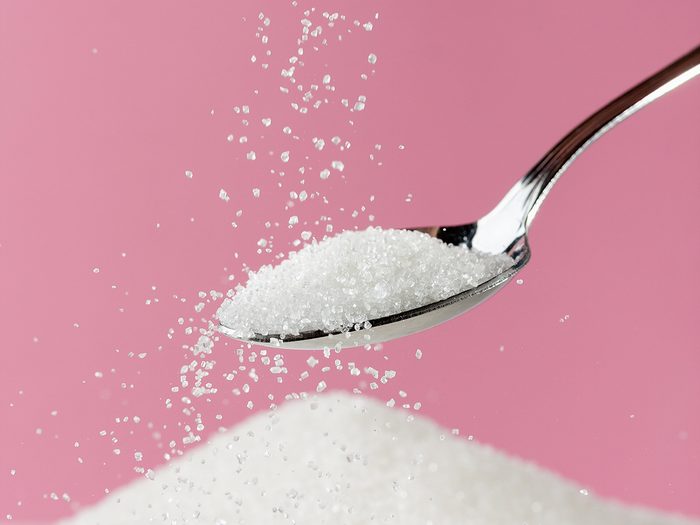
Not checking for hidden sugar
While bread does need a pinch of sugar to activate the yeast, it shouldn’t be dessert. When you’re buying bread, be sure to check the label for any added sugar, which is used to help the bread retain moisture and taste sweeter, but can spike your daily sugar consumption. Watch out for ingredients like corn syrup, cane juice and even honey, too.
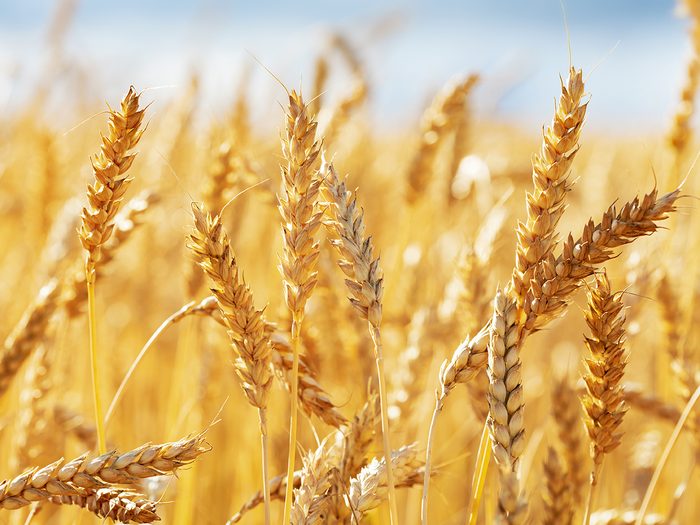
Assuming “wheat” means healthy
Seeing “wheat” on the packaging might suggest your loaf is packed with fibre and nutrients, but you’ll want to check the ingredient list to be sure. The only flour you should see listed is “whole wheat flour” or “100% whole wheat flour”—other flours are often stripped of nutrition.
Here are 35 easy bread recipes anyone can bake.
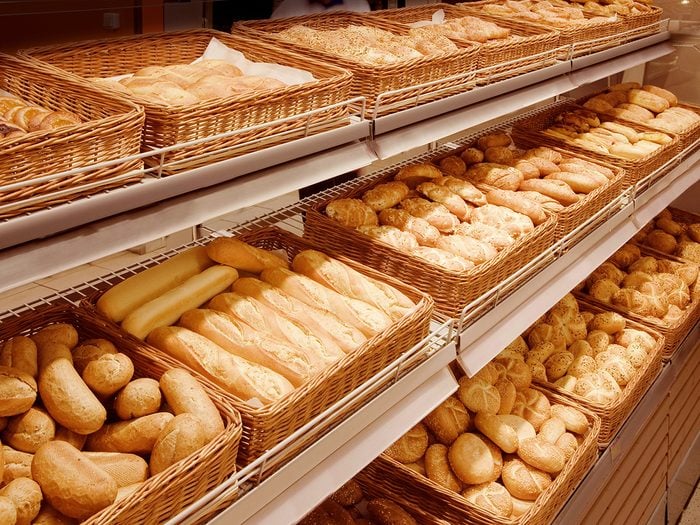
Assuming “all-natural” is a good thing
This is another common label trap, and, unfortunately, it doesn’t mean much. Brands can still use enriched white flour, sugar and additives in an “all-natural” product. Your best bet when buying bread is to look for words like “organic” and consult the ingredient list. Options with whole wheat flour, few ingredients and no sugar will be much healthier than the “all-natural” choice.
Find out how to read nutrition labels like a pro.
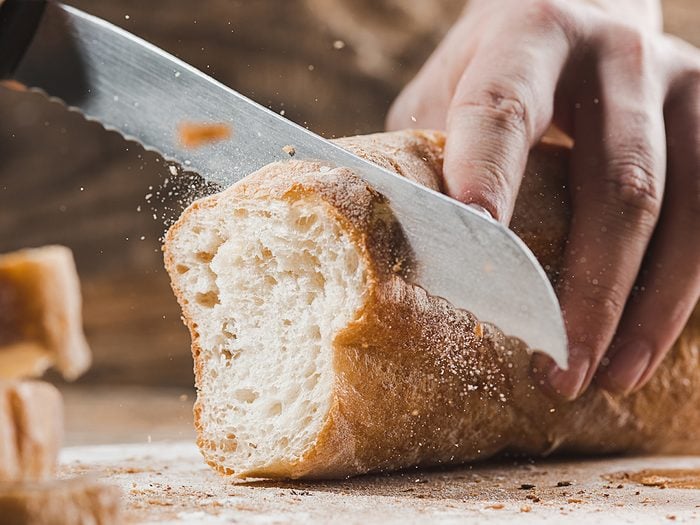
Not knowing the difference between whole wheat and whole grain
Though they’re not synonymous, both types of bread keep the entire wheat kernel intact. However, whole-grain bread can also include other grains, like rice and barley—whole wheat bread is a type of whole-grain bread.
Don’t miss our ultimate guide to healthy grocery shopping.
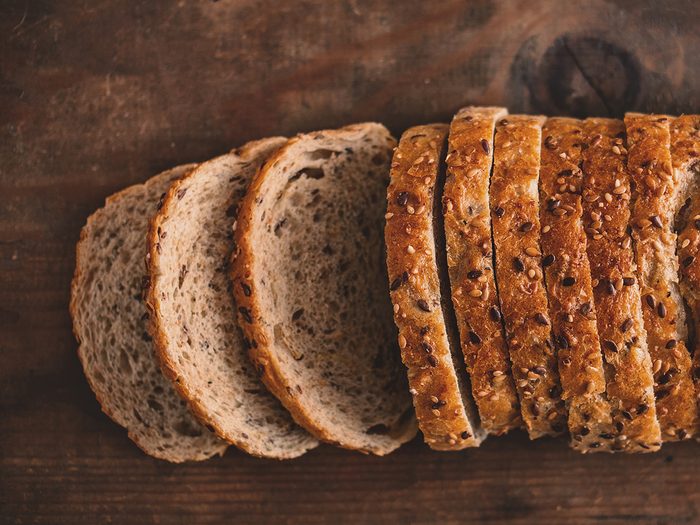
Thinking that more grains are better than one
“Multi-grain” is another deceptive label—it means that multiple grains (think rice, corn or barley) can be included with the wheat, but none of those are guaranteed to be whole grains. To get the most nutritious flour, focus on the word “whole” when you’re buying bread.
Here are the foods everyone over 50 should be eating.
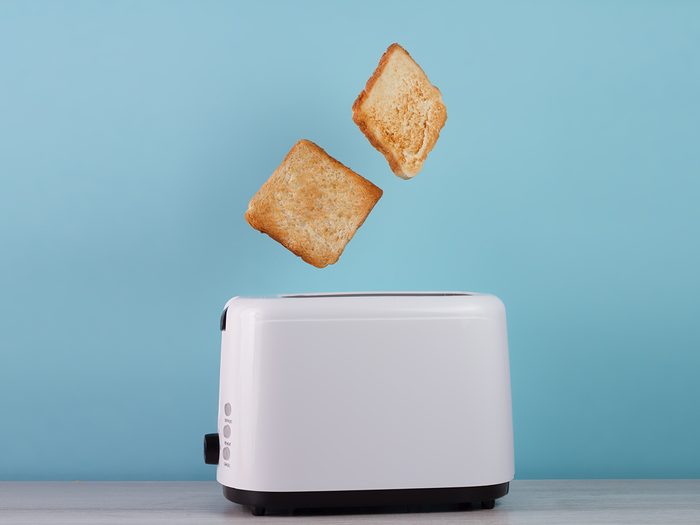
Ignoring additives
The best bread is fresh bread—but not bread that’s been kept fresh through preservatives. If you can, avoid bread with long ingredient lists and only buy bread with ingredients you can pronounce.
Find out how to tie a bread bag—without a bread clip.
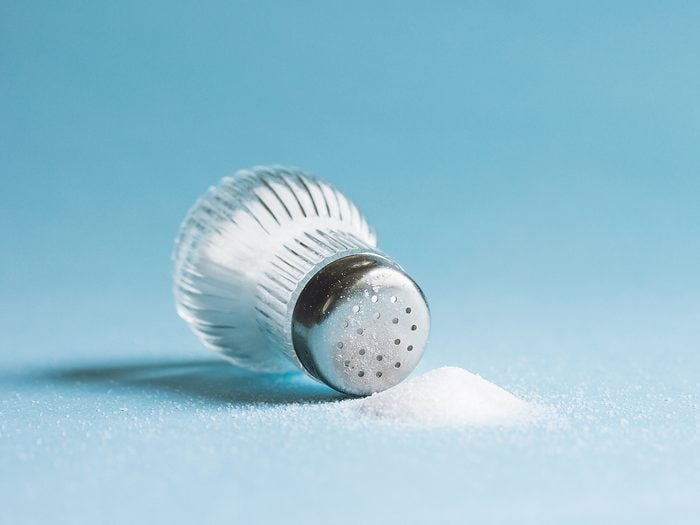
Not looking for hidden salt
Both our bodies and bread require a bit of salt—but sometimes brands add more to enhance flavour or act as a preservative. To monitor your sodium intake, look for bread with less than 150mg of sodium per serving, and make other low-sodium food swaps where you can.
Find out how salt is making you sick.
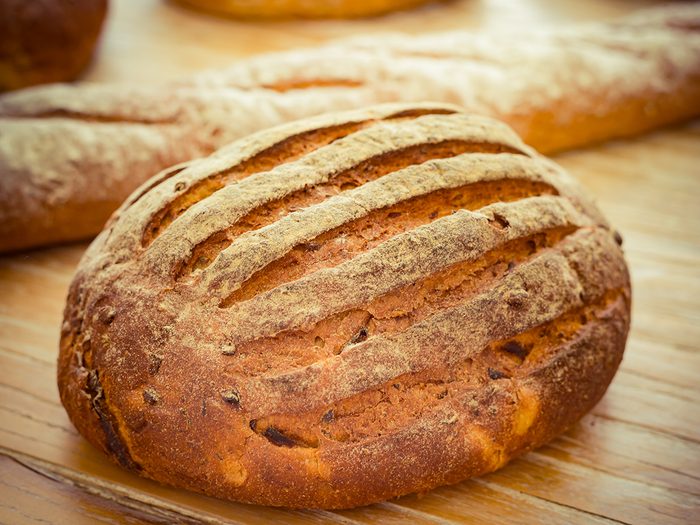
Only looking in the bread aisle
Sprouted breads like Ezekiel bread (above) are the most nutrition-dense options, and they’re usually found in the refrigerated or freezer sections. They contain whole grains that have been germinated, which some nutritionists say are healthier, have lower gluten contents and are easier for our bodies to digest.
Find out which foods you’re spoiling by putting in the refrigerator.

Forgetting about fibre
One of bread’s great benefits is its fibre content. But the more processed a loaf is, the less fibre it’s likely to have. Keeping an eye on “whole grain” and “whole wheat” labels should guarantee you get three to four grams per serving.
Here are the high fibre foods worth adding to your grocery cart.
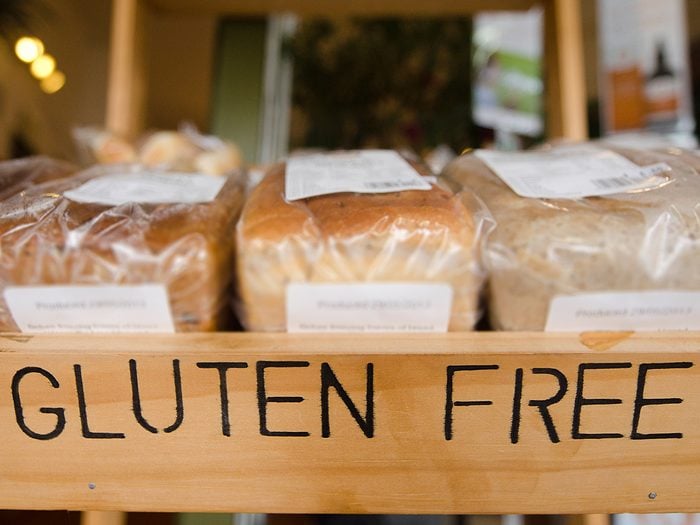
Shopping for gluten-free bread
Unless you have celiac disease or a gluten intolerance, gluten-free breads aren’t necessarily a healthier choice. Many of them are made from starches like rice and potatoes and contain preservatives and sweeteners. If you do want gluten-free bread, try making it at home or look for those made with low-carb, high-fibre options like almond or coconut flour.
Next, find out how to buy the best eggs.